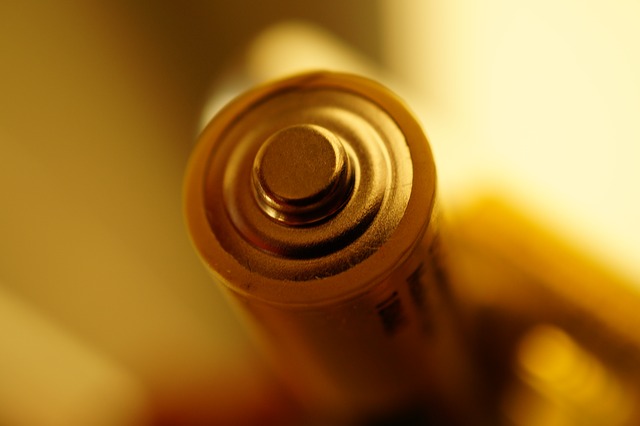LiPo Battery Life Expectancy Analysis
Dec 10, 2019 Pageview:1696
Lithium-based batteries are shaping the future of battery energy and technology. They have come up strong, taking the market by storm with their strength and capacity. Manufacturers are fighting to stay ahead by proving better solutions in battery power now and then.
Since the world is leaning more towards technology and development, you can expect to find electronic devices almost everywhere. Everyone today at least has a Smartphone or can access one. Many people have laptops, as well. The battery inside any of such device you have is probably lithium-based.
The most recent, and perhaps the strongest of these is LiPo batteries. LiPo is a short form for Lithium Polymers, a rechargeable battery that has revolutionized the battery industry. The batteries have become a major component in power-hungry RCs. Modern RC planes, helicopters, and drones require a lot of power, and LiPos seem to be taking the challenge quite well.
However powerful they are, LiPos behave more or less like any other batteries out there. They are not immune to degradation. This is why one must learn about their life expectancy and what they can do to improve it. You are at the right place to get all this information.
What is the lipo battery life expectancy value?
To understand this section, let us start by looking at what all the numbers mean. The numbers are important for the sake of understanding the batteries. They are called ratings and tell us what the battery is and how powerful it is. You can use these numbers to compare battery properties and determine the perfect cell when construction a pack.
The first number is the voltage or cell count. LiPos come with a nominal voltage of 3.7V. If you create a battery pack with 2 LiPo batteries inside, you will have a total of 7.4V. Nominal voltage is described as the default or resting voltage of a battery. Do not confuse this with the full charge because LiPos can go up to 4.2V when fully charged.
The next number is capacity. Basically, this rating is used to determine how much power the battery can hold. It can be compared to the size of a fuel tank. Capacity is measured in a unit called milliamp-hours (mAh). In other words, it is shown how much drain can be put on a battery per discharge hour. Capacity determines how long your battery will serve you before you recharge. For RC cars and trucks, the average voltage required is 5000mAh. This can be found un LiPos.
Then there is the discharge rating (C Rating). It is easier to understand voltage and capacity because they have a direct impact on the speed and run time of the device. For C-rating, however, things are not on such a straight line. Batteries discharge in a specific ratio. The C rating stands for the safest rate for discharging the battery.
Last but not least is the internal resistance. This is a measure of difficulty a battery has in supply power to your device. High internal resistance means the motor of your RC may never get enough energy, which may make it slow. This number changes over time.
The numbers discussed above determine the life expectancy of a LiPo battery. They give LiPos a typical life expectancy of 150 to 250 cycles. This is because the batteries heat up whenever they are in use, and many people discharge them lower than 3.0V per cell. Physical damage and water may also reduce their life expectancy.
How do you protect the LiPo battery properly?
LiPo batteries require special care, more than any other battery type. Many people face a big challenge when it comes to taking care of LiPo batteries. But don’t worry, we have highlighted a few points that can help you here.
1.Charging
Most LiPo batteries get damaged and lose their capacity faster due to poor charging factors. When charging, there is a system of use called the CC/CV charging. This is simply a constant current/constant voltage rating.
You need to pick the right charger for the job. A good charger should give you a constant charge until the battery reaches its peak at 4.2V. At this stage, it should be able to maintain the voltage while reducing the current.
This helps the performance of the battery. The right charger will also help you in achieving proper balance for the battery. It acts as an equalizer for each cell voltage, especially in a pack.
2.Discharging
Another greatest threat to LiPo life is poor discharging. As much as LiPos have plenty of power for radio controls, for instance, it has a price to pay. With such power and capacity, LiPo batteries are most vulnerable to fires. The battery chemistry is the real issue here, in which heat affects the components greatly.
This is where choosing the right charger becomes paramount, as well. You want to ensure proper discharging is achieved. Do not charge a LiPo battery that is below 3.0V.
3.Storage
Gone are the days when you could just run batteries until they die and place them on the shelf waiting for next time you may need them. Today, it is recommended that you put the battery into storage mode. Note that storing fully charged LiPo battery destroys the cells. It is advisable that you discharge them up to about 40% then keep them in a cool, dry place. And remember to recharge then once in a while.
4.Disposal
LiPo battery is hazardous and should not be disposed of anyhow. Start by discharging them as far as you can. Place them in saltwater and check again to ensure they are at 0.0V. Then you can dispose of them in a garbage bin.
Can you extend LiPo battery life?
Yes, you can. LiPo batteries are not different from other batteries. Consider the factors that affect your batteries’ performance. For instance, we have mentioned the heat in the previous section; this is the greatest enemy to LiPo batteries. Ensure you set the right temperature for your device.
Be careful about charging the batteries too high, or discharging them too low. In essence, this means you need to use the right charger. This will help you increase the battery life expectancy greatly.
The tips we have shared above on proper care apply here as well. They are all you need to get your RC running longer.
As there you have it – you understand what you need to do to take care of your LiPo batteries. We hope it helps you get better service.
- Prev Article: Lithium Manganese Oxide (LMO) Battery - LiMn2O4 Manufacturer
- Next Article: 18650 Battery Power Bank
Leave Message
Hottest Categories
-
Hottest Industry News
-
Latest Industry News












